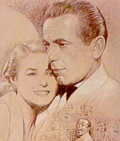Factual mistakes in The Crucible
-
Betty Parris' mother was not dead, but very much alive at the time. She died in 1696, four years after the events. 1
-
Soon after the legal proceedings began, Betty was shuttled off to live in Salem Town with Stephen Sewall's family. Stephen was the clerk of the Court, brother of Judge Samuel Sewall. 1
-
The Parris family also included two other children -- an older brother, Thomas (b. 1681), and a younger sister, Susannah (b. 1687) -- not just Betty and her relative Abigail, who was probably born around 1681.1
-
Abigail Williams is often called Rev. Parris' "niece" but in fact there is no genealogical evidence to prove their familial relationship. She is sometimes in the original texts referred to as his "kinfolk" however. 1
-
Miller admits in the introduction to the play that he boosted Abigail Williams' age to 17 even though the real girl was only 11, but he never mentions that John Proctor was 60 and Elizabeth, 41, was his third wife. Proctor was not a farmer but a tavern keeper. Living with them was their daughter aged 15, their son who was 17, and John's 33-year-old son from his first marriage. Everyone in the family was eventually accused of witchcraft. Elizabeth Proctor was indeed pregnant, during the trial, and did have a temporary stay of execution after convicted, which ultimately spared her life because it extended past the end of the period that the executions were taking place. 1
-
The first two girls to become afflicted were Betty Parris and Abigail Williams, not Ann Putnam, and they had violent, physical fits, not a sleep that they could not wake from. 1
-
There never was any wild dancing rite in the woods led by Tituba, and certainly Rev. Parris never stumbled upon them. Some of the local girls had attempted to divine the occupations of their future husbands with an egg in a glass -- crystal-ball style. Tituba and her husband, John Indian (absent in Miller's telling), were asked by a neighbor, Mary Sibley, to bake a special "witch cake," -- made of rye and the girls' urine, fed to a dog -- European white magic to ascertain who the witch was who was afflicting the girls. 1
-
The Putnam's daughter was not named Ruth, but Ann, like her mother, probably changed by Miller so the audience wouldn't confuse the mother and the daughter. In reality, the mother was referred to as "Ann Putnam Senior" and the daughter as "Ann Putnam Junior." 1
-
Ann/Ruth was not the only Putnam child out of eight to survive infancy. In 1692, the Putnams had six living children, Ann being the eldest, down to 1-year-old Timothy. Ann Putnam Sr. was pregnant during most of 1692. Ann Sr. and her sister, however did lose a fair number of infants, though certainly not all, and by comparison, the Nurse family lost remarkably few for the time. 1
-
Rev. Parris claims to Giles Corey that he is a "graduate of Harvard" -- he did not in fact graduate from Harvard, although he had attended for a while and dropped out. 1
-
The judges in The Crucible are Samuel Sewall, Thomas Danforth, and John Hathorne. The full panel of magistrates for the special Court of Oyer and Terminer were in fact named by the new charter, which arrived in Massachusetts on May 14, 1692 were William Stoughton, John Richards, Nathaniel Saltonstall, Wait Winthrop, Bartholomew Gedney, Samuel Sewall, John Hathorne, Jonathan Corwin and Peter Sergeant. Five of these eight had to be present to form a presiding bench, and at least one of those five had to be Stoughton, Richards, or Gedney. Thomas Danforth the Deputy Governor, joined the magistrates on occasion as the presiding magistrate.1
-
The events portrayed here were the examinations of the accused in Salem Village from March to April in the context of a special court of "Oyer and Terminer." These were not the actual trials, per se, which began later, in June 1692. The procedure was basically this: someone would bring a complaint to the authorities, and the authorities would decide if there was enough reason to send the sheriff or other law enforcement officer to arrest them. While this was happening, depositions -- statements people made on paper outside of court -- were taken and evidence gathered, typically against the accused. After evidence or charges were presented, and depositions sworn to before the court, the grand jury would decide whether to indict the person, and if so, on what charges. If indicted, the person's case would then go to a petit jury, or to "trial" something like we know it only much faster, to decide guilt or innocence. Guilt in a case of witchcraft in 1692 came with an automatic sentence of death by hanging, as per English law. 1
-
Saltonstall was one of the original magistrates, but quit early on because of the reservations portrayed as attributed to Sewall's character in the play. Of the magistrates, only Sewall ever expressed public regret for his actions, asking in 1696 to have his minister, Rev. Samuel Willard, read a statement from the pulpit of this church to the congregation, accepting his share of the blame for the trials. 1
-
Rebecca Nurse was hanged on July 19, John Proctor on August 19, and Martha Corey on September 22 -- not all on the same day on the same gallows. And the only person executed who recited the Lord's Prayer on the gallows was Rev. George Burroughs -- which caused quite a stir since it was generally believed at the time that a witch could not say the Lord's Prayer without making a mistake. They also would not have been hanged while praying, since the condemned were always allowed their last words and prayers. 1
-
The elderly George Jacobs was not accused of sending his spirit in through the window to lie on the Putnam's daughter -- in fact, it was usually quite the opposite case: women such as Bridget Bishop were accused of sending their spirits into men's bedrooms to lie on them. In that period, women were perceived as the lusty, sexual creatures whose allure men must guard against! 1
-
The hysteria did not die out "as more and more people refused to save themselves by giving false confessions," as the epilogue of the movie states. The opposite was true: more and more people gave false confessions to save themselves as it became apparent that confession could save one from the noose. What ended the trials was the intervention of Governor William Phips. Contrary to what Phips told the Crown in England, he was not off in Maine fighting the Indians in King William's War through that summer, since he attended governor's council meetings regularly that summer, which were also attended by the magistrates. But public opinion of the trials did take a turn. There were over two hundred people in prison when the general reprieve was given, but they were not released until they paid their prison fees. Neither did the tide turn when Abigail Williams accused Rev. Hale's wife, as the play claims -- although the "afflicted" did start accusing a lot more people far and wide to the point of absurdity, including various people around in other Massachusetts towns whom they had never laid eyes on, including notable people such as the famous hero Capt. John Alden (who escaped after being arrested). 1
-
Abigail Williams probably couldn't have laid her hands on 31 pounds in Samuel Parris' house, to run away with John Proctor, when Parris' annual salary was contracted at 66 pounds, only a third of which was paid in money. The rest was to be paid in foodstuffs and other supplies, but he even then, he had continual disputes with the parishioners about supplying him with much-needed firewood they owed him. 1
-
Certain key people in the real events appear nowhere in Miller's play: John Indian, Rev. Nicholas Noyes, Sarah Cloyce, and most notably, Cotton Mather. 1
- Giles Corey was not executed for refusing to name a witness, as portrayed in the movie. The play is accurate: he was accused of witchcraft, and refused to enter a plea, which held up the proceedings, since the law of the time required that the accused enter a plea. He was pressed to death with stones, but the method was used to try to force him to enter a plea so that his trial could proceed. Corey probably realized that if he was tried at all, he would be executed, and his children would be disinherited. (Interestingly, Miller wrote both the play and the screenplay... Who knows why he changed it to a less-accurate explanation for his punishment and execution?) 1
-
"The afflicted" comprised not just a group of a dozen teenage girls -- there were men and adult women who were also "afflicted," including John Indian, Ann Putnam, Sr., and Sarah Bibber -- or anyone in Andover, where more people were accused than in Salem Village! 1
-
There's a tiny scene in the movie with a goat getting into someone's garden and tempers flaring -- the actual history is that three years before the witchcraft accusations, a neighbor's pigs got into the Nurse family's fields, and Rebecca Nurse flew off the handle yelling at him about it. Soon thereafter, the neighbor had an apparent stroke and died within a few months. This was seen as evidence in 1692 of Rebecca Nurse's witchcraft. 1
1 Burns, Margo : http://www.17thc.us/docs/fact-fiction.shtml, Arthur Miller's The Crucible : Fact & Fiction, 2003.
|

